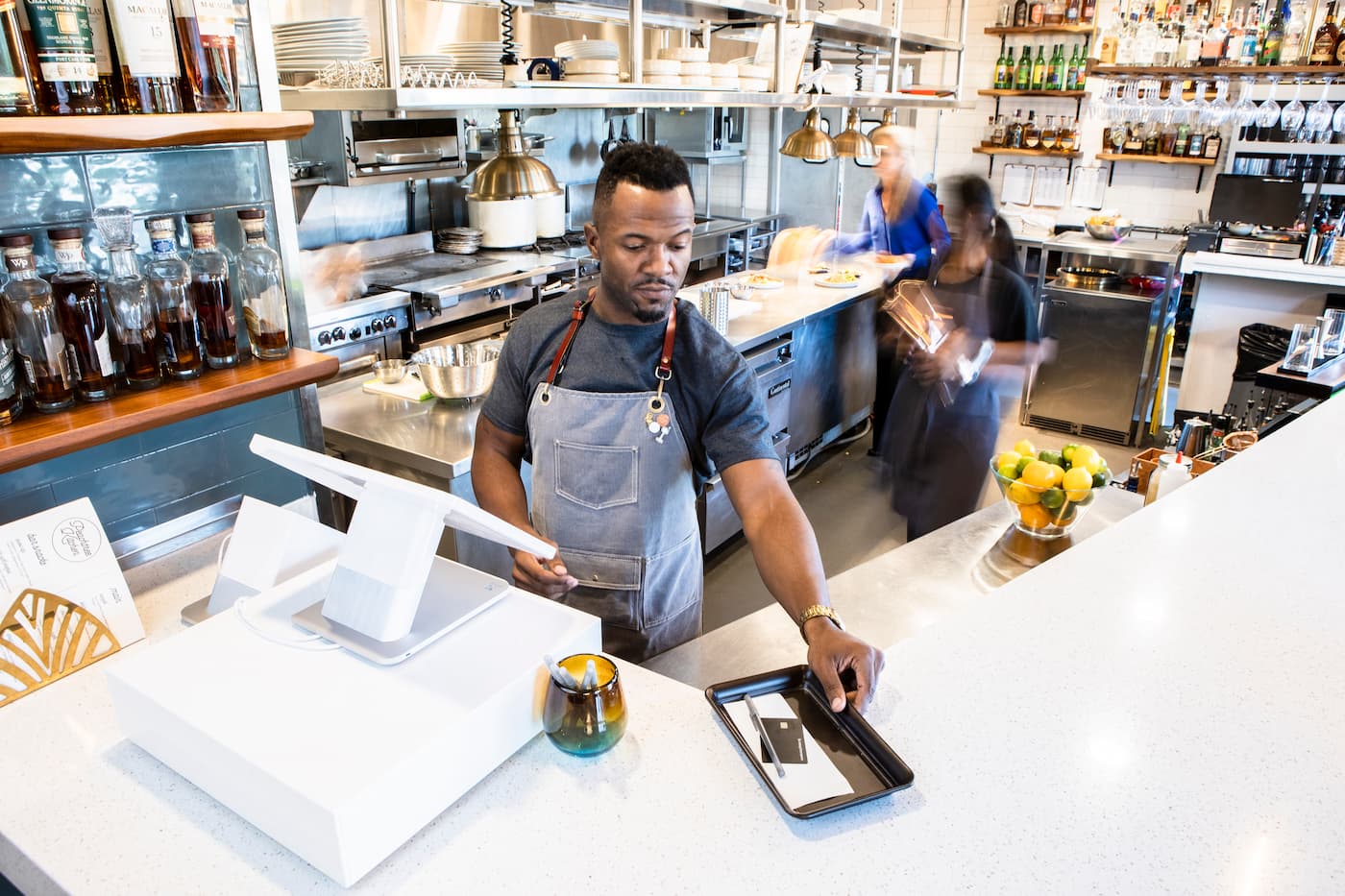Tip pooling and tip splitting: The complete guide for restaurant owners
Editorial Team
6 min read
What is tip pooling, and should you consider it for your restaurant or business? Many food and beverage businesses are considering pooling tips as a way to incentivize teamwork between front- and back-of-house employees.
After all, if the team works smoothly together towards the shared goal of customer satisfaction, it makes sense to split the tips traditionally given to customer-facing employees.
Pooled tips can work well for any quick-service or counter restaurant business. It’s also a smart policy for restaurants as they introduce new business operations like curbside or delivery with their own crews. That said, tip pooling and tip splitting can be controversial topics among restaurant employees. More seasoned servers may not appreciate giving up a chunk of their tip earnings to newer employees who earn less – let alone to a back-of-house employee who takes frequent breaks. Whichever tipping policy your restaurant chooses, make sure you’ve discussed the matter with your employees and gained the team’s buy-in before implementation.
What is tip pooling?
Tip pooling means all or some of the tips collected are combined and redistributed fairly among all employees at the end of the shift. Tip pooling arrangements ensure that back-of-house staff also benefit from tips earned during the shift. Tip pooling laws allow employers to take a “tip credit” of up to $5.12 per hour of employees’ tips against their minimum wage obligation. Take note, however: If the employer keeps any tips or requires employees to share tips with non-tipped employees, the employer cannot take a tip credit and must pay all employees the full minimum-wage amount.
What’s the difference between tip pooling and tip splitting?
The main difference between tip pooling and tip splitting is that tip splitting is entirely voluntary and doesn’t carry the same mandatory guidelines as tip pooling. Tip splitting involves splitting a certain percentage or amount of collected tips between all non-salaried employees.
Tip splitting can arise as an informal ‘one hand washes the other’ type arrangement between employees. Much like tip pooling, tip splitting tends to foster teamwork when it works well.
That said, just because tip splitting is informal doesn’t mean it doesn’t adhere to certain laws. To comply with tip-splitting laws, employers have to pay tipped employees the minimum cash wage, and the minimum federal wage. Employers cannot claim a tip credit above $5.12 or one that exceeds the amount of tips received by the employee. Employees also have to be informed that their employer is applying for a tip credit.
Federal, state, and local laws are constantly evolving. ADP, which is integrated into the Clover dashboard, can help restaurant owners stay ahead of these labor laws by helping you complete payroll and keep track of changing regulations all in one place
Ways to split tips
There are three ways of splitting tips: by hours worked, via a points system, or based on a percentage. Homebase helps Clover merchants implement each of these systems seamlessly. Let’s walk through how each method works.
How to split tips by hours worked
To split servers’ tips by hours worked, add up the total amount of tips and then divide that figure by the total hours worked. Then multiply that figure by the hours an individual server worked.
For example, say a team of employees earned $900 together. Server #1 worked an 8-hour shift. Server #2 worked 5 hours, and server #3 worked a 7-hour shift. The total number of hours worked is 20. Divide $900 by 20 hours, and you get $45 per hour of tip revenue. Now multiple $45 by each server’s hours worked. Server #1 gets $45 x 8, or $360. Server #2 gets $45 x 5, or $225. Server #3 earns $45 x 7, or $315. You’ll notice that you can double-check your math by adding these three figures together: $360 + $225 + 315 = $900.
How to split tips using the points system
The points system can be an effective way to pool 20-100% of servers’ tips and fairly distribute them among all the employees. Under this system, different types of employees are given a certain number of points.
Let’s say your servers were given 10 points each and your bartenders and bussers were given 5 points each. Let’s further assume you have three servers working a shift, one bartender and one busser. If together this team earned $1200 in a shift, the points system would disperse the tips as follows: the three servers would get 30 points, the bartender would get 5 points, and the busser would get 5 points. The total points are 40. Now divide the $1,200 in tips by the total number of points (40) to get the worth of each point: $30.
Now multiply the point value by each employees’ number of points. In this example, the three servers would get $30 x 30 points, or $900, which they would split evenly between the three of them so that each server earns $300. Similarly, the bartender gets $30 x 5, or $150 and the busser also gets $30 x 5 or $150. Again, check your calculations by adding up the total number of payouts – these should, and do, equal $1,200.
How to split tips based on percentage
Finally, let’s consider tip splitting based on percentage. This includes tipping out support staff based on a percentage of the tips they earned. Usually, the percentage split would be 10% to the bartender and another 25-30% split between the remaining employees.
Let’s consider a to-go crew example. Imagine a delivery driver sold $1,000 in a shift and earned $180 in tips. Here’s how much the rest of the staff would earn. The cook would receive 10%, or $18. The person who took the orders would receive 6%, or $10.80. The order preparer would receive 13%, or $23.40. The busser would receive 6%, or $10.80. The delivery driver would then take home 65% of their tips, or $117.
How Homebase can help
Regardless of the policy your restaurant adopts, it’s important to stay on top of local regulations and communicate your intentions with your team. Homebase can help Clover merchants stay in the loop with ever-changing labor laws, while streamlining the process of managing a team with messaging, scheduling and time tracking all in one place. Staying connected with your team has never been easier.
Use Homebase with your Clover POS today.
GET STARTED*Important Disclaimer: Homebase is the sole and exclusive provider of services described in this article. Clover does not make any representations or guarantees as to these products / services. Please see Homebase Terms & Conditions for more information.
This information is provided for informational purposes only and should not be construed as legal, financial, or tax advice. Readers should contact their attorneys, financial advisors, or tax professionals to obtain advice with respect to any particular matter.
Employers should consult federal and/or state laws to comply with tipping regulations.
Related Posts
5 ways an optimized website can supercharge restaurant sales
How to finance a restaurant
Popular Topics
Stay in touch
Sign up and learn more about Clover.
Thank you for your subscription!
More posts about starting a small business
eBook





